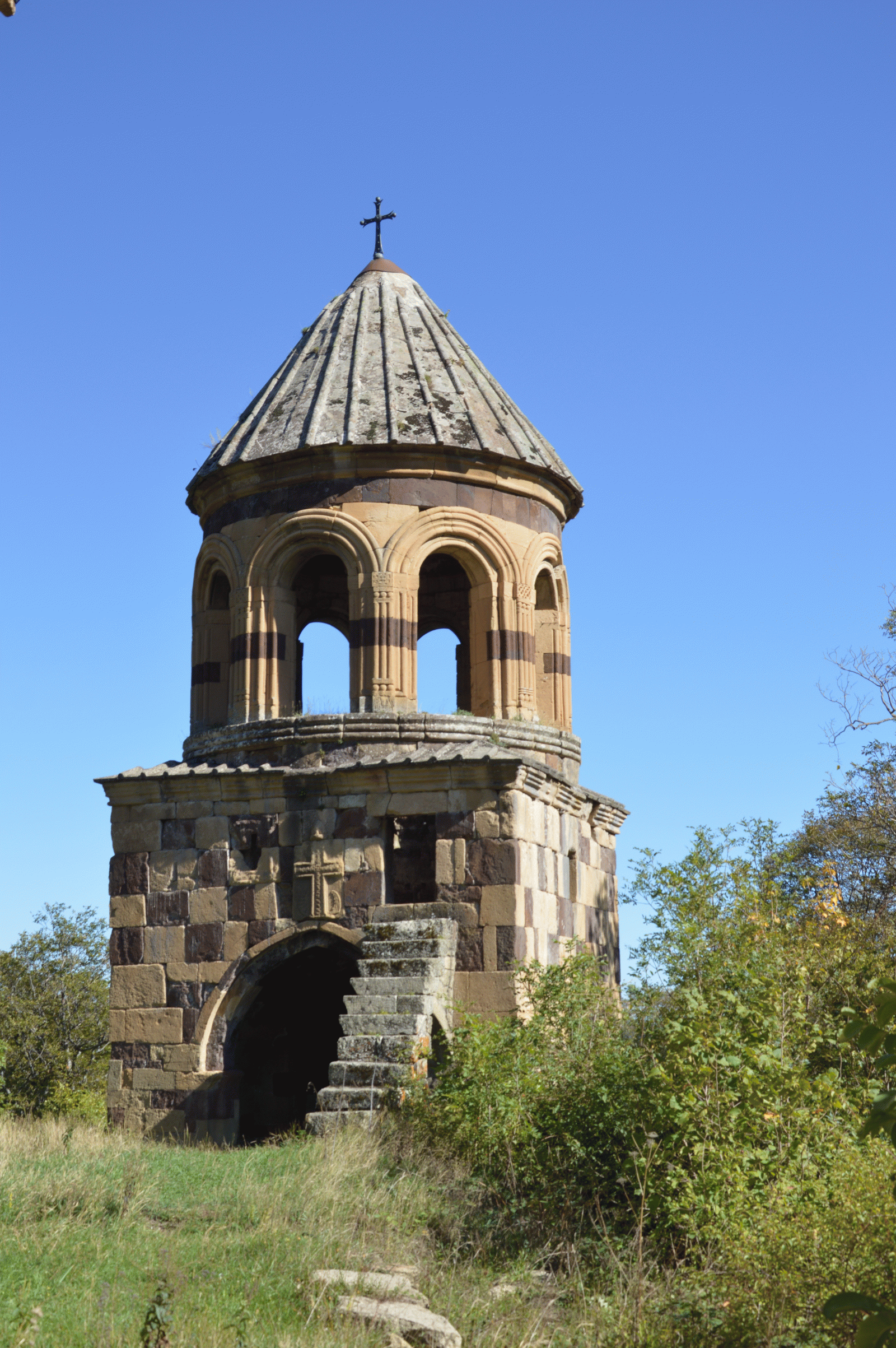Georgia Project Lecture Series
Natia Natsvlishvili:
Bell Towers in Medieval Georgia: Architecture and Ritual
Aesthetics, Art, and Architecture in the Caucasus Lecture Series Part II
In collaboration with the George Chubinashvili National Research Centre for Georgian Art History and Heritage Preservation

Gudarekhi Bell Tower, 1278. View from the West.
This talk will discuss the development of the religious soundscape in Medieval Georgia and give a general overview of the architecture of bell towers. Following the practice of the Eastern Christian Church, the semantron was the main instrument used to summon monks in early Medieval Georgian monasteries. An examination of written sources provides valuable evidence of how and when they were used. The introduction of bells for religious purposes led to the emergence and the development of bell towers as functionally corresponding architectural forms.
From the thirteenth century onward, bell-towers appear among the monastic buildings in Georgia. The first bell-towers were erected exclusively in monasteries as free-standing structures. They are two-storey buildings with a massive lower part and a belfry on the top of it. The oldest securely dated bell-tower was built in 1278 at the Gudarekhi Monastery. In the following centuries, the number of floors in bell-towers increased reaching four floors in Ninotsminda. This talk will discuss the typology, design, and decoration of bell-towers in Georgia from the thirteenth to the seventeenth centuries.
Natia Natsvlishvili is Senior Researcher at the George Chubinashvili National Research Centre in Tbilisi. In 2019, she received her PhD from the Ilia State University (Tbilisi) for her research in the history and architecture of Catholic churches in Georgia.
Natia Natsvlishvili’s research interests include construction methods of Medieval master builders, fortifications of the Justinian Age, urban planning, and female patronage of art and architecture in Medieval and Early Modern Georgia. She is co-author (with Dimitri Tumanishvili and David Khoshtaria) of the book Master Builders in Medieval Georgia (2012, Japanese edition 2020), and contributed to the books Church Building in Nineteenth-Century Tbilisi: Architecture and Identity (2016) and Urban Planning and Architectural Design in the Cities of Georgia (2019).
From 2015 to 2018, Natia Natsvlishvili participated in the travelling seminar Crossing Frontiers: Christians, Muslims, and Their Art in Eastern Anatolia and the Caucasus organized by the Courtauld Institute of Art. She is actively involved in cultural heritage preservation projects in Georgia. She is currently participating in a project for the conservation of the masonry of the Jvari Church at Mtskheta.
14 dicembre 2021, ore 15:00
This event will take place online.
To participate please register in advance via Zoom: https://zoom.us/meeting/register/tJwpduGrpz4qG9VIwNn79SuxrxKBSJ3tlxwMAfter registering, you will receive a confirmation email containing information about joining the meeting.
Avviso
Questo evento viene documentato fotograficamente e/o attraverso riprese video. Qualora non dovesse essere d’accordo con l’utilizzo di immagini in cui potrebbe essere riconoscibile, da parte del Kunsthistorisches Institut in Florenz a scopo di documentazione degli eventi e di pubbliche relazioni (p.e. social media) la preghiamo gentilmente di comunicarcelo.


